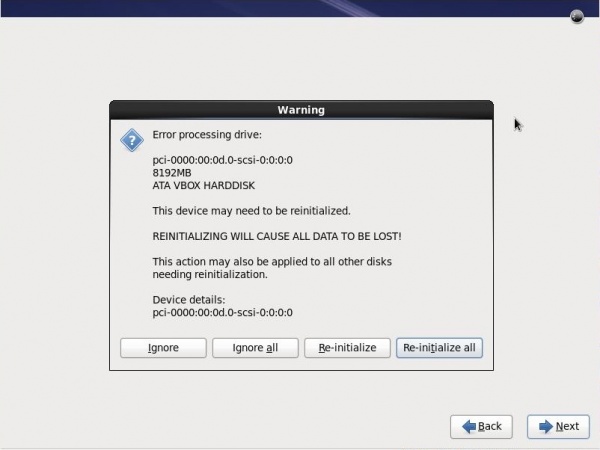...or, the "Monty Python and the Holy Grail" monks' guide to making your Mac desktop work like a server, instead of going and getting a copy of OS X Server like you should...
Mac OS X Server brings OS X simplicity and Unix power to a range of hardware systems. Most of the things that Server makes trivially simple can be done in OS X Desktop. Some of them, however, require the patience of Job and the ingenuity and tenaciousness of MacGyver...or so they at first appear.
One such task is installing Joomla! This is a nice little Web CMS which has some nice features for users, developers and administrators. On most Unix-like systems, or even recent versions of Microsoft Windows, installation is a very straightforward process for any system which meets the basic requirements (Web server, PHP, MySQL, etc.) as documented in the (PDF) Installation Manual or the PDF Quick Start guide. On most systems, it takes only a few minutes to breeze through from completed download to logging into the newly installed CMS.
The OS X desktop, as I said, is a bit different. This isn't a case of Apple's famous "Think Different" campaign so much as it appears to be a philosophical conflict between Apple's famous ease-of-use as applied to user and rights management, coming up against traditional Unix user rights management. Rather than the former merely providing a polished "front end" interface for the latter, some serious mind-games and subversion are involved. And I'm not talking about the well-known version control software.
When things go wrong with regard to a simple installation process of a well-known piece of software, usually Google is Your Best Friend. If you search for joomla mac install, however, you quickly notice that most of the hits talking about OS X desktop recommend that you install a second Apache, MySQL and PHP stack in addition to the one that's already installed in the system — packages such as XAMPP, MAMP and Bitnami. While these packages each appear to do just what it says on their respective tins, I don't like having duplicate distributions of the same software (e.g., MySQL) on the same system.
Experience and observation have shown that that's a train wreck just begging to happen.
Why? Let's say I've got the "Joe-Bob Briggs Hyper-Extended FooBar Server" installed on my system. (System? Mac, PC, Linux; doesn't matter for this discussion.) When FooBar bring out a new release of their server (called the 'upstream' package), Joe-Bob has to get a copy of that, figure out what's changed from the old one, and (try to) adapt his Hyper-Extended Server to the new version. He then releases his Hyper-Extended version, quite likely some time behind the "official" release. "What about betas," you ask? Sure, Joe-Bob should have been staying on top of the pre-release release cycle for his upstream product, and may well have had quite a lot of input into it. But he can't really release his production Hyper-Extended Server until the "official" release of the upstream server. Any software project is subject to last-minute changes and newly-discovered "show-stopper" issues; MySQL 5.0 underwent 90 different releases. That's a lot for anybody to keep up with, and the farther away you get from that source of change (via repackaging, for example), the harder it is to manage your use of the software, taking into account features, security and the like.
So I long ago established that I don't want that sort of duplicative effort for mainstream software on modern operating systems. (Microsoft Windows, which doesn't have most of this software on its default install, is obviously a different problem, but we're not going there tonight.) It's too easy to have problems with conflicts, like failing to completely disable the "default" version of a duplicated system, to inject that kind of complexity into a system needlessly.
That isn't to say that it doesn't become very attractive sometimes. Even on a Mac OS X desktop — where "everything" famously "just works" — doing things differently than the "default" way can lead to great initial complexity in the name of avoiding complexity down the line. (Shades of "having to destroy the village in order to save it.")
The installation of Joomla! went very much like the (PDF) Installation Manual said it should... until you get to the screen that asks for local FTP credentials that give access to the Joomla! installation directory. It would appear that setting up a sharing-only user account on the system should suffice, and in fact several procedures documenting this for earlier versions of Mac OS X describe doing just that. One necessary detail appears different under 10.6.2, however: the "Accounts" item in System Preferences no longer allows the specification of user-specific command shells...or, if it does, it's very well hidden.
Instead, I created a new regular, non-administrative user for Joomla! I then removed the new user's home directory (under /Users) and created a symlink to the Joomla! installation directory.
Also, one difference between several of the "duplicating" xAMP systems I mentioned above and the standard Apache Web server as on OS X (and Linux) is that in the default system, access to served directories is disabled by default; the idea is that you define a new Apache <Directory> directive for each directory/application you install. Failing to do this properly and completely will result in Apache 403 ("Forbidden") errors. Depending on your attitude to security, you may either continue to do this, or change the default httpd.conf setting to Allow from All and use .htaccess files to lock down specific directories.
Once you have the underlying requirements set up (and FTP access is the only real think-outside-the-box issue, really), Joomla! should install easily. But if you're in a hurry and just trying to go through the documented procedures, you're quite likely to spend considerable time wondering why things don't Just Work.
And no, neither Fedora nor Ubuntu Linux "do the right thing" out-of-the-box either. At least, not im my tests.
